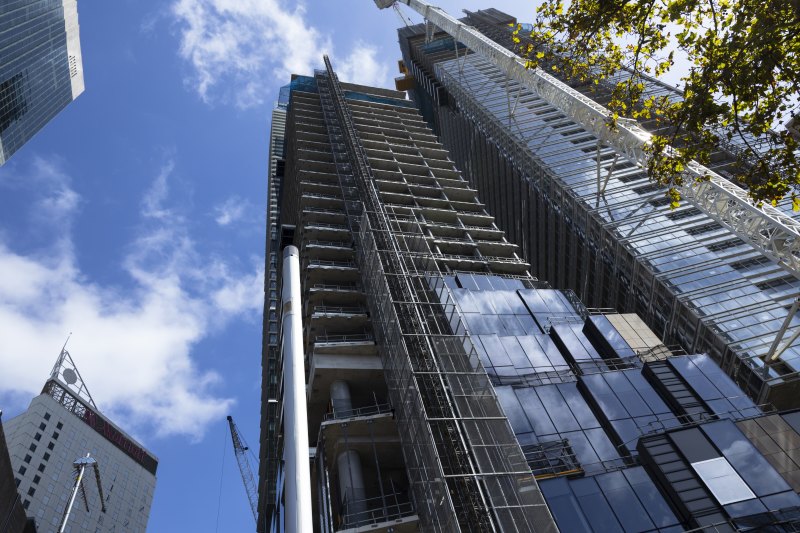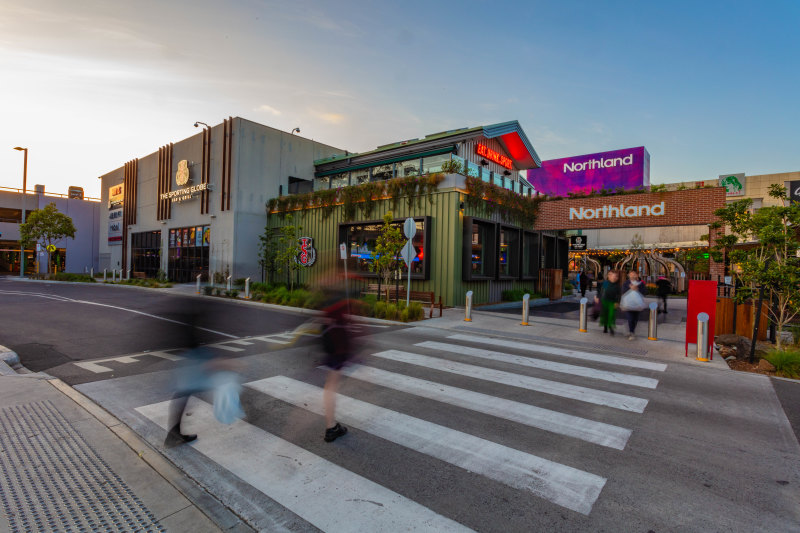
The fine art of modernising Mies van der Rohe's New National Gallery in Berlin
Gerrit Wiesmann
BERLIN: “We’re like surgeons around a body,” said David Chipperfield as he looked at Berlin’s New National Gallery. “We’ve opened him up and now we’re looking at him.”
The building, designed by Ludwig Mies van der Rohe, one of the 20th century’s greatest architects, was almost as bare as it had been at its topping-out ceremony, in April 1967. The British architect and his lieutenant, Martin Reichert, a partner in his sizable Berlin office, surveyed the dirty steel frame and exposed concrete walls atop weed-strewn sand.
Since Chipperfield, 63, last visited the site five months before, Reichert and a team of 10 architects had finished taking apart the innards of Mies‘ monumental building, a templelike space sheathed by glass walls and topped with a mighty steel roof. Some 35,000 pieces – including 14,000 granite slabs, 3500 light fixtures, and one Mies-designed ashtray – awaited cleaning and buffing up. The building itself will be worked on to fix problems caused by age, as well as some that have plagued it since birth.
“It’s like an old man, naked except for socks,” Chipperfield said to Reichert, half amused, half shocked.
The two were surveying their handiwork halfway through a five-year restoration project, Miesian in its attention to detail and German in its underpublicised ambition. The goal is to reopen the New National Gallery’s stunning collection of modernist art in 2020 in a building that will work better than it did, but look and feel utterly untouched. It is in marked contrast to his planned design for New York’s Metropolitan Museum – currently delayed – which would have transformed the building with a whole new wing for modern and contemporary art.
The New National Gallery project is budgeted at €100 million (about $150 million) but, like a Mies building, reveals its daring only at second or third glance. Chipperfield wants this 50-year-old gallery, as delicate as it is monumental, to perform as well as the most modern, assiduously climate-controlled and carefully lit museum – without any visitor noticing that he was ever there. He is trying to overcome the classic contradiction between the desire to preserve the old and the pressure to raise a building’s performance to contemporary standards.
“As a building, the New National Gallery probably has more original Mies left in it than any other Mies building in the world, but as an art museum, the New National Gallery has to meet the highest modern building standards,” said Kerstin Wittmann-Englert, an architectural historian at Berlin’s Technical University. She said she could think of few other projects in which the demands of preservation and performance diverged so sharply, and on such a scale. “Chipperfield is, in a way, trying to square that circle.”
It is quite a circle to square. Having left Nazi Germany for the United States in 1937, Mies was courted by West Berlin in the early 1960s to build something uplifting in the divided city. He chose to build a museum. The upper deck of the New National Gallery became the largest and most uncompromising of Mies‘ pavilion-style designs – an open floor plan, no interior columns, walls of little more than glass. It would be used for temporary exhibitions; a cosier lower floor would house the permanent collection.
Unfortunately for Chipperfield, the aging Mies – he died in 1969, a year after the gallery opened – put his sense of mission before the laws of physics (and warnings from city planners). The single-glazed facade, held upright by delicate window frames, proved unsuited to Berlin’s cold winters and hot summers. The humidity demanded by the artworks led to condensation on the inside of the glass, and the expansion and contraction of all that metal cracked one huge pane after another.
“Mies took architecture to its extreme,” Chipperfield said. “And as a result, the building has some – let’s not call them flaws – it has some challenges, which we’ve had to address.”
In a more conventional and pliable building, he said, an architect could solve a condensation problem by simply putting more insulation in the walls. “But with Mies, there’s no place to hide.”
Knowing that Mies had left him no choice but to tackle the competing claims of preservation and performance head on, Chipperfield and his team drew inspiration from their feted restoration of Berlin’s 19th-century Neues Museum, between 2003 and 2010. Chipperfield’s startling part-preservation, part-reinterpretation of this badly war-damaged building was key in landing him the commission for the New National Gallery.
When they started work on the Neues Museum, Chipperfield and his team dealt separately with the various interested parties – most notably the Berlin Heritage Conservation Authority, which was interested in preservation, and the Neues Museum curators, who wanted a building that performed as a modern museum should. “We were in different rooms fighting with different people about different issues,” Chipperfield said. “I just got fed up with that and said, let’s all sit in the same room and solve everything together.”
This collaborative method became key for the New National Gallery. All sides quickly agreed that the facade needed subtle expansion joints to stop the glass cracking. But they realised double-glazing to stop condensation would ruin Mies‘ aesthetic; slightly thicker single glazing would have to do. As a result, the condensation will not be entirely banished, and sensitive works of art will not be on display in the upper hall in deep winter or high summer.
Consensus was not always easy to achieve, according to Joachim Jäger, head of the New National Gallery. “I think the radical nature of Chipperfield’s approach will only become apparent when the gallery reopens,” he said. “He and his team were adamant about protecting the spirit of Mies.”
Some visitors would surely complain about there being no cafe in the sculpture garden, Jäger said – Mies planned it as a space for reflection, not for pleasure – and he himself was still having trouble accepting that the lower gallery would again be carpeted, 1960s-style.
“It’s a bit shocking,” said Chipperfield, surveying the lower floor. “You see how thin the illusion of architecture is.”
To which Reichert added: “Mies really was a magician. He could do so much with so little – even with something that looks like an underground parking garage.”












